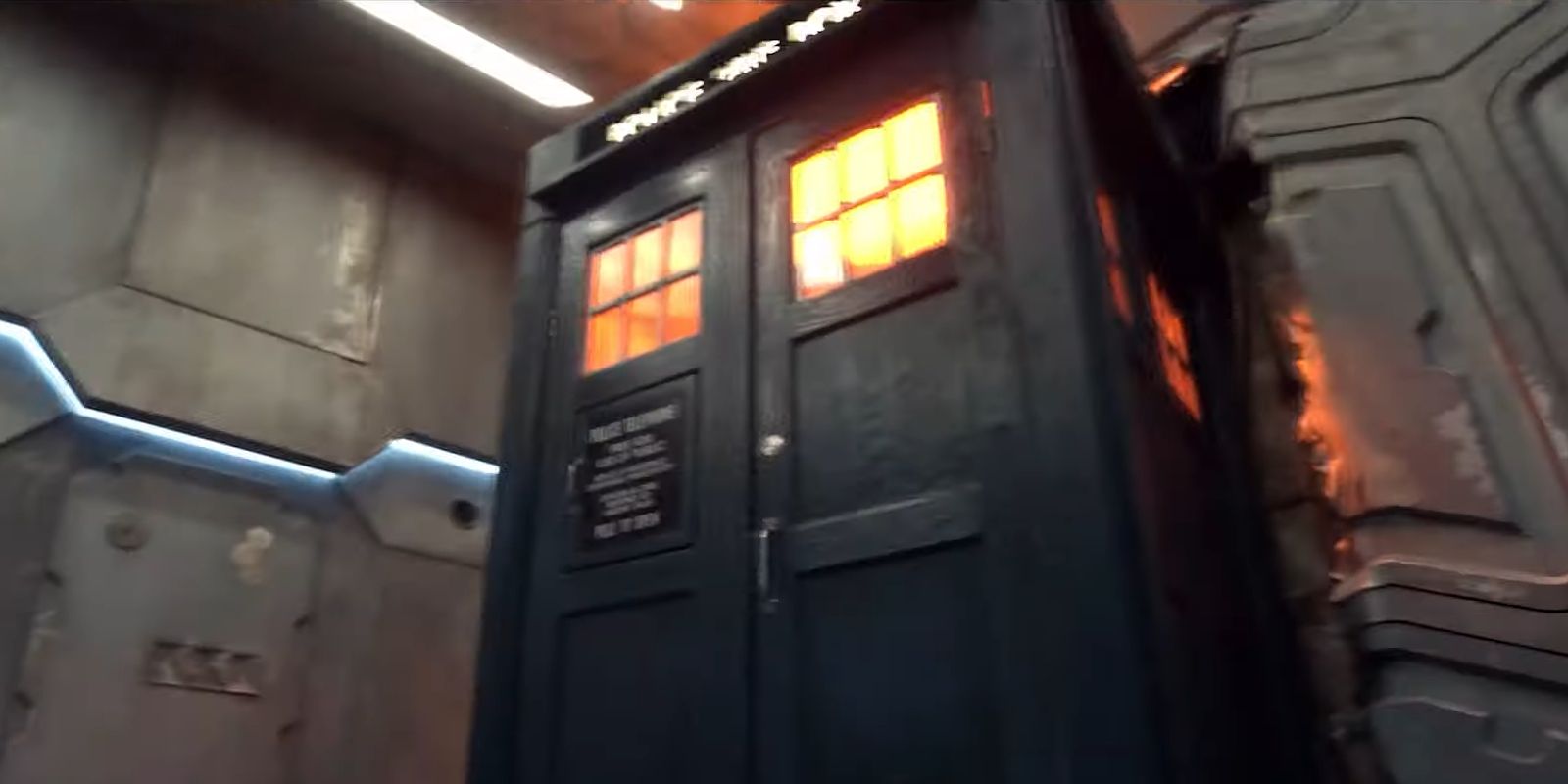Doctor Who: What Are The HADS, & Why Does The TARDIS Run Away?
The Hostile Action Displacement System gets triggered again in Doctor Who, but how does this feature work and why does it make the TARDIS run away?

WARNING: Contains MILD SPOILERS for Doctor Who – “Wild Blue Yonder”.
The TARDIS runs away in Doctor Who‘s second 60th anniversary special, “Wild Blue Yonder”, thanks to the reactivation of the Hostile Action Displacement System, or HADS for short. After a catastrophic coffee spill, the TARDIS takes the Fourteenth Doctor (David Tennant) and Donna Noble (Catherine Tate) to the furthest reaches of the galaxy, before abandoning them in the middle of hostile action. The Hostile Action Displacement System is a slightly flawed security measure, given that it invariably strands the Doctor and their companions in hostile situations. It’s rare that they kick in while the Doctor is inside the TARDIS, but as the Fourteenth Doctor wryly states, there would be no Doctor Who adventures if they did.
For Doctor Who writers, the Hostile Action Displacement System is a tool that they can use to quickly dispatch the TARDIS and inject some jeopardy. “Wild Blue Yonder” isn’t the only time that this TARDIS feature has been used in Doctor Who‘s 60-year history. As the Doctor says to Donna, the HADS have always been a feature of Doctor Who‘s TARDIS – until they switched them off. Now that the HADS are back on, it’s worth explaining how the Hostile Action Displacement System works in Doctor Who.

Doctor Who’s New TARDIS Is The First Design To Actually Deliver On “Bigger On The Inside”
Doctor Who’s first 60th anniversary special reveals the new TARDIS design, and this groundbreaking refit finally justifies “bigger on the inside.”
What Is The Hostile Action Displacement System?
The Hostile Action Displacement System is a TARDIS defense mechanism that dematerializes the ship should the outer shell come under threat. It was first introduced during Patrick Troughton’s Doctor Who era, in “The Krotons”, the debut serial by legendary Whoniverse writer Robert Holmes. In the 1970s, Robert Holmes would establish much of the Time Lord mythology that still defines Doctor Who to this day, and the HADS was his first contribution to TARDIS lore. Interestingly, the novelization of “The Krotons” revealed that the Hostile Action Displacement System had to be manually set by the TARDIS owner.
“The Krotons” was novelized by another key architect of Doctor Who mythology, 1970s script editor Terrance Dicks. It’s telling that Dicks included this additional piece of information about the HADS, knowing that with a functioning Hostile Action Displacement System there would be no Doctor Who. Dicks’ assertion that the HADS must be manually set lines up with what David Tennant’s Fourteenth Doctor says in “Wild Blue Yonder”, in the sense that the Doctor has to remember to turn them off, rather than on, to maximize adventure.
Past Doctor Who Stories Featuring The HADS
First introduced in the Patrick Troughton serial “The Krotons” in 1968, the HADS were triggered by an attack by the titular crystalline aliens. The HADS were largely forgotten about until Doctor Who‘s 21st century run. In Mark Gatiss’ story “Cold War”, the Eleventh Doctor (Matt Smith) and Clara Oswald (Jenna Coleman) are stranded inside a Soviet submarine when the HADS are triggered. The presence of an Ice Warrior and the tensions of the nuclear age were clearly enough to make the TARDIS run away toward the South Pole. Clara later references the HADS in the Twelfth Doctor (Peter Capaldi) story “Kill the Moon” when the TARDIS falls into a ravine.
The HADS were also deployed in Doctor Who‘s season 9 opener, “The Magician’s Apprentice”/”The Witch’s Familiar”, when Dalek creator Davros ordered the destruction of the TARDIS. In that story, writer Steven Moffat revealed that HADS could also stand for Hostile Action Dispersal System, when the TARDIS dispersed itself to present the illusion that it had been destroyed by the Daleks. The HADS were later featured in the Fourteenth Doctor comic book Liberation of the Daleks, when he surmised that they were responsible for removing him from the collapsing Earth 66 simulation.
What Kind Of Circumstances Trigger The TARDIS’ HADS?
If the Hostile Action Displacement System is enabled on the TARDIS, then a variety of circumstances can trigger it. Generally, it’s triggered when the TARDIS is under physical attack, be it from the Krotons’ dispersion jets or the Daleks’ cannon. To avoid destruction, the TARDIS removes itself from the hostile situation. When it’s switched on, it’s a pretty handy function. For example, in “The Five Doctors”, the TARDIS came under attack from Cybermen and had to be ethereally redirected to Rassilon’s tomb to avoid destruction. However, there are many other occasions where the TARDIS withstands a serious attack without running away, so it’s unclear exactly how bad things need to be for the HADS to kick in.
The TARDIS is highly advanced technology, so it does make sense for it to have a failsafe that removes it from a dangerous situation to avoid capture. Of all the classic Doctor Who villains to trigger the TARDIS’ HADS, only the Daleks, Ice Warriors, and Krotons have seemingly posed enough of a threat. However, as Doctor Who‘s second 60th anniversary special, “Wild Blue Yonder” proves, the HADS is probably more hassle than it’s worth, given that it often leaves the Doctor and their companion in deadly danger.
Doctor Who‘s 60th anniversary specials continue Saturdays on Disney+ and BBC1.




